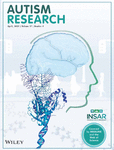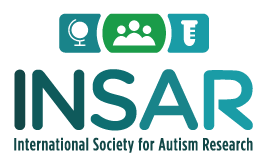Journal list menu
Export Citations
Download PDFs
ISSUE INFORMATION
REVIEW ARTICLE
Figurative language processing in autism spectrum disorders: A review
- Pages: 674-689
- First Published: 10 December 2023
Difficulties related to figurative language processing are commonly observed among autistic individuals. However both the extent and the exact source of these difficulties remain controversial. We reviewed studies from the last decade examining the processing of different subtypes of nonliteral language in ASD, including metaphors, idioms and verbal irony with a focus on the role of ToM, language abilities, and EFs in figurative language comprehension. This review highlights the importance of using low-verbal nonliteral language tasks and argues that ToM, language skills, and EFs may have independent contributions to autistic individuals' ability to process nonliteral forms of language.
COMMENTARY
Measurement matters: A commentary on the state of the science on patient reported outcome measures (PROMs) in autism research
- Pages: 690-701
- First Published: 01 March 2024
Much of autism research uses questionnaires completed by autistic people themselves or someone who knows them well. However, we often do not have a good understanding of how these types of questionnaires work among autistic people. In this commentary paper, we summarize important issues in this area of science, identify things that may get in the way of making progress on these issues, and provide recommendations and resources about what to do next.
NEUROSCIENCE
Research Article
Dynamic functional connectivity in the right temporoparietal junction captures variations in male autistic trait expression
- Pages: 702-715
- First Published: 08 March 2024
Autistic individuals may have difficulties with redirecting their attention and understanding others' thoughts and it is possible that there is a direct link between the interaction of these two functions and the level of social difficulties in autism. One way to test this link is by assessing how different brain regions associated with these functions are communicating with each other and working in synchrony. The present study focused on two subdivisions of a brain region called the temporoparietal junction, which has been associated with attention and understanding others' thoughts. Our aim was to assess the dynamic communication between these subdivisions in autistic and non-autistic individuals and whether differences in this dynamic communication might be related to higher or lower expressions of social difficulties. Using brain scans from two different groups of 29 and 58 participants, we found that communication between these brain regions was less dynamic in autistic individuals in both groups. Moreover, reduced dynamic communication between these two subdivisions of the temporoparietal junction was associated with greater social difficulties. Across the two groups, we show consistent results whereby some of the social difficulties observed in autistic individuals might arise from reduced dynamic communication between brain areas linked to attention and understanding of others' thoughts. This insight adds to our understanding of how the spectrum of autistic traits might be rooted in the brain's communication patterns and advances the search for biological markers of autism.
EPIDEMIOLOGY
Research Article
Gestational thyroid hormones and autism-related traits in the EARLI and HOME studies
- Pages: 716-727
- First Published: 04 March 2024
The study examined the association between gestational thyroid hormone levels and ASD-related traits in two pregnancy cohorts. Our results suggested higher levels of gestational free thyroxine levels and lower levels of thyroid-stimulating hormone were associated with more ASD-related traits in children, with variations depending on the degree of clinical impairment and the familial likelihood of ASD.
PSYCHOLOGY
Research Articles
The latent structure of the Delis–Kaplan system for autism
- Pages: 728-738
- First Published: 08 April 2024
This study found two latent factors, Cognitive Flexibility and Abstraction, for the Delis–Kaplan Executive Function System in a sample of autistic individuals. Removing the Verbal Fluency (VF) task from the model improved overall model fit. The VF task requires participants to continuously produce novel words, which may be challenging for autistic individuals and confound their performance on the measure overall given that communication deficits are a common feature of autism.
The impact of adverse childhood events on service support and educational outcomes of children who are autistic: A theory-guided analysis using structural equation modeling
- Pages: 739-746
- First Published: 21 March 2024
Using a theory-guided structural equation model, this study examined whether Autistic children who have experienced ACEs experience barriers to receiving special education or other developmental services—thus, impacting educational outcomes. Results found ACEs were directly associated with poorer school outcomes and demonstrated an inverse relationship with support services. In other words, when support services were increased, school outcomes improved. The study highlights the importance of recognizing ACEs among children with Autism and increasing the availability of support services for this population to improve academic outcomes.
The clinical relevance of subgroups of autistic adults: Stability and predictive value
- Pages: 747-760
- First Published: 01 March 2024
Autism in adulthood is characterized by differences between autistic people, in terms of autism characteristics, experienced strengths, and difficulties. In our earlier work, we identified two subgroups that differed in their susceptibility to experienced difficulties. The current study involves a longitudinal extension of our previous work. We demonstrate that the subgroups are stable over time, and useful for clinical predictions up to 5 years in the future as differences were shown in cognitive failures, psychological difficulties, and quality of life.
Social competence in autism: A structural equation modeling approach
- Pages: 761-774
- First Published: 14 March 2024
Autistic individuals present with difficulties in social competence (e.g., navigating social interactions and fostering relationships). Clinical interventions widely target social cognition and social behavior, but there is inconsistent understanding of the underlying components of social competence. The present study used structural equation modeling to examine social cognition and social behavior and explore the relationship between these latent constructs in 219 autistic youth (ages 10–17). Youth and their caregivers completed measures of social cognition and social behavior. Model results indicate latent constructs of social cognition and social behavior are not closely related in autistic youth. Noted treatment implications include consideration of how targeting social cognition and social behavior together or separately may support autistic youth's progress toward reaching their identified therapeutic goals and supporting their self-directed social development.
Sensory experiences questionnaire unravels differences in sensory profiles between MECP2-related disorders
- Pages: 775-784
- First Published: 03 March 2024
This study evaluated sensory processing differences in individuals with disorders related to the MECP2 protein. We found both individuals with deficits in MECP2 (Rett syndrome), and those with too much MECP2 protein (MECP2 duplication syndrome, MDS) exhibited atypical sensory behaviors but that hypersensitivity was much more pronounced in MDS.
Mental rotation and language in autism spectrum disorder
- Pages: 785-798
- First Published: 02 April 2024
This study tested spatial cognition and how language skills relate to spatial cognition in autistic individuals versus peers without autism to better understand links between cognition and language. We found that the autistic group experienced greater difficulty on the spatial cognition task than peers without autism, and that language was linked with how efficiently they completed the spatial cognition task to a lesser degree in the autistic than non-autistic group. These results suggest that language may not be drawn upon when autistic individuals are completing cognitive tasks as much as is observed in non-autistic peers.
Leisure, community, workforce participation and quality of life in primary and secondary caregivers of autistic children
- Pages: 799-811
- First Published: 27 February 2024
The present study examined participation and well-being outcomes in primary and secondary caregivers, providing evidence for the different caregiver roles and responsibilities within families of Autistic children. While primary and secondary caregiver responsibilities were different, the findings showed that access to meaningful activities was important for quality of life amongst both primary and secondary caregivers.
Is camouflaging unique for autism? A comparison of camouflaging between adults with autism and ADHD
- Pages: 812-823
- First Published: 07 February 2024
In the present study, we investigated whether only autistic people use strategies to hide one's autistic traits (also referred to as camouflaging) or whether people with ADHD use similar strategies. We found that people with ADHD reported more camouflaging behavior compared to a neurotypical comparison group, but less than autistic people. Thus, these results indicate that camouflaging is not unique for autism and it is important to be aware of camouflaging strategies in people with ADHD.
Investigating implicit emotion processing in autism spectrum disorder across age groups: A cross-modal emotional priming study
- Pages: 824-837
- First Published: 15 March 2024
Research is needed to know whether there are differences in how autistic and non-autistic individuals of different ages process emotions unconsciously. Our study shows that hearing emotionally spoken words unconsciously influenced how non-autistic people understood facial expressions across all age groups, while only non-autistic children were influenced by emotionally sung words. In contrast, only autistic children and adolescents, but not autistic adults, were influenced by emotionally spoken words when interpreting facial expressions. Autistic individuals of all age groups were influenced by emotionally sung words when interpreting faces. These results suggest that autistic people are less influenced by spoken information during unconscious emotion processing which can affect real-world social communication, as emotional cues in speech can be used to support judgment of facial expressions.
Infants who develop autism show smaller inventories of deictic and symbolic gestures at 12 months of age
- Pages: 838-851
- First Published: 10 January 2024
As infants learn to talk, they use gestures to communicate. In this study, we used a parent-report questionnaire to look at the group level differences of gestures in the first 2 years of life by comparing infants who later developed autism to infants who did not develop autism. We found that infants who later developed autism have fewer gestures and a slower rate of gesture growth compared to infants who did not develop autism. Play behaviors and imitation skills were also impacted in young autistic children when compared to their non-autistic peers.
Increased anticholinergic medication use in middle-aged and older autistic adults and its associations with self-reported memory difficulties and cognitive decline
- Pages: 852-867
- First Published: 18 December 2023
Certain medicines are associated with problems in memory and thinking in older people who are not autistic. This study looked at the use of these kinds of medications in middle-aged and older autistic people. Many autistic adults were taking at least one of these kinds of medicines. Autistic adults who took more of these types of medicines said they had more memory problems. After 2 years, autistic adults who took more of these medicines reported declines in their thinking abilities.





